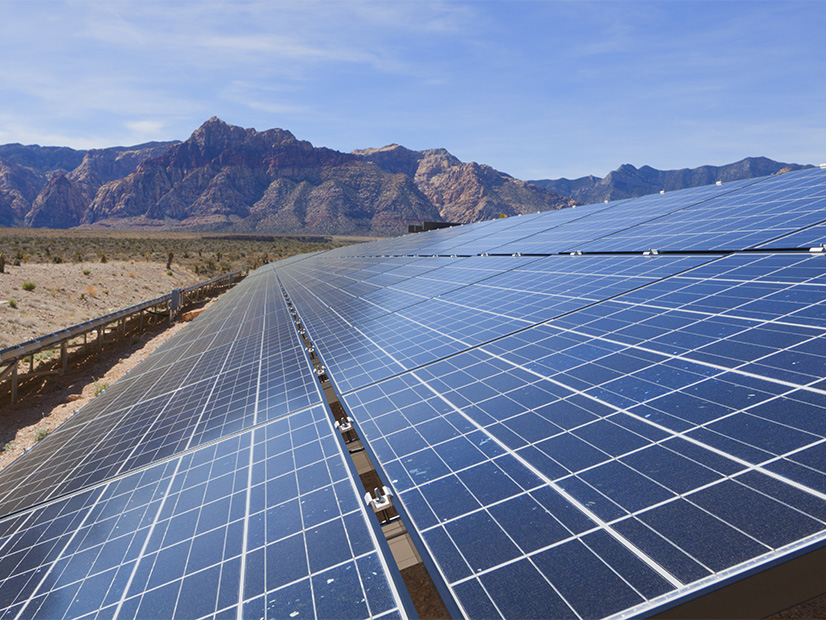
The U.S. Department of Interior has a plan to empower BLM to cut fees for solar and wind projects on public lands in the West.
The U.S. Department of Interior on Thursday announced a plan to make solar and wind energy development on public lands in Western states faster, easier and less expensive.
DOI said its proposed Renewable Energy Rule would reduce fees for such projects by about 80% and offer greater certainty to private-sector developers. It would codify reductions made by guidance last year and would expand them.
Publication of the proposed rule in the Federal Register on Friday kicked off a 60-day public comment period.
Under the proposal, the Bureau of Land Management would retain authority to hold competitive auctions but would gain expanded ability to accept non-competitive leasing applications it deemed to be in the public interest.
The Federal Land Policy and Management Act generally requires holders of rights of way to pay in advance the fair market value for use of public lands.
But the Energy Act of 2020 empowered BLM to make an exception to that rule — to reduce both acreage rents and capacity fees for existing and new solar and wind projects — if it makes certain findings, such as that the rates impose economic hardships or limit commercial interest in a competitive lease sale or ROW grant, or that the reduced cost is necessary to promote the greatest use of wind and solar energy resources.
BLM proposes to base the capacity fee on actual energy production of the installed equipment, rather than its nameplate capacity.
BLM also proposes to calculate the acreage rent for an ROW based on the per-acre value for pastureland calculated in the National Agricultural Statistics Service Cash Rents Survey, and to collect that acreage rent whether or not energy is generated on the land that year.
The five-year median per-acre value is currently $6.62 in the western states.
The capacity fee would be collected only if it exceeds the acreage rent; if a capacity fee is collected, no acreage rent would be due for the year.
One component of the capacity fee, the MWh rate — which is based on wholesale prices for the major trading hubs serving 11 Western states or on prices received by the ROW holder under a power purchase agreement — would be reduced by 80% until 2036 under the proposed rule.
In 2036, that would drop to a 20% reduction, but only for new ROWs and for existing ROWs up for renewal.
BLM expects that these reductions would particularly benefit smaller-scale projects or projects on the cusp of profitability.
BLM also is proposing capacity fee reductions tied to an ROW holder’s use of U.S.-made components, stimulating the domestic manufacturing sector by reducing the net cost differential between U.S.-made and foreign materials.
The Energy Act of 2020 established a minimum goal of authorizing production of not less than 25 GW of geothermal, solar and wind projects on public land not later than 2025. As of mid-2023, BLM has authorized more than 13 GW.

